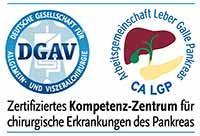About the disease
Femoral hernia is a bugle or lump, which usually protrudes into omentum or intestinal loops. However, sometimes a hernia sac can include male testicles or a female ovary, as well as a bladder and an appendix.
According to medical statistics, this condition affects every tenth person with abdominal hernia. Due to the postpartum complications and a specific anatomy of the female pelvis, this disease is more common among women. It can also be diagnosed in patients as young as one year old, because their abdominal walls are weak and cannot hold the internal organs.
The disease develops because of physiological and anatomical preconditions, which cause weakness of the abdominal wall. These include impaired innervation of the peritoneum, postoperative scarring, numerous pregnancies, rapid weight loss and injuries in the abdominal area. The following factors that cause high abdominal pressure can also contribute to the development of the condition:
- Prolonged labor
- Frequent constipation
- Cough
- Difficulty urinating
- Physical stress
The effect of these factors can be long-term or single.
Symptoms
The swelling causes discomfort in the groin area, which can increase with physical exertion, but can also be asymptomatic until the development of parietal hernia. This saccular smooth protrusion usually has a semicircular shape. It is located under the inguinal fold. The protrusion is reset and afterwards a patient can have rumbling of the intestine. The symptoms include:
- Persistent pain that increases with coughing
- “Skin crawling” in the numb limb
- If bladder is entrapped in the “hernia”, the patient will suffer from frequent urination accompanied by burning and pain.
Diagnosis
Due to the absence of a pronounced clinical picture, it is difficult to diagnose this disease at the early stage. Palpation can help to determine a type of hernia, its size and condition. Ultrasound can determine the contents of the hernia sac.
Treatment
- Conservative treatment has failed to be efficient for this condition. In the diagnosis of femoral hernia the patient is advised to have surgical treatment, such as herniotomy and herioplasty. Do not be afraid to have surgery. If you do not have surgical intervention, the content of the hernia sac will come out and damage itself. Consequently, the protrusion will become larger and functioning of the organs will be impaired.
- During the surgery a doctor opens the hernia sac, examines its contents, resects an affected part of the omentum, resets internals back to their proper location, resects femoral hernia and performs the plastic repair of its canal. The surgery is performed very carefully as to not affect the healthy organs. To perform endoscopic transabdominal or extraperitoneal preperitoneal plastic repair, there can be used materials, such as an antiallergenic polypropylene mesh or patient’s own tissues. The last type of plastic repair is worse than a synthetic mesh. The biological tissues are stretched and it causes pain and circulatory disorders. If the sutures tear apart, there is a greater likelihood of relapse.
- Some specialists prefer to treat femoral hernia by means of the mesh. Laparoscopic techniques are rarely used, since they are not very reliable. The mesh is placed on the area with high pressure in order to protect a weakened connective tissue from high strains. The mesh retains the organs and promotes a rapid growth of connective tissue. A synthetic implant can prevent the recurrence of the disease. In the case of strangulated femoral hernia, a dysfunctional part of the intestine is resected.
- A postoperative period includes restoration of the bladder and intestines, prevention of thromboembolic and infectious complications. To achieve these goals, doctors prescribe motor activity, “vascular” formulae and antibiotic therapy.
Authors: Dr. Vadim Zhiliuk, Dr. Sergey Pashchenko




















